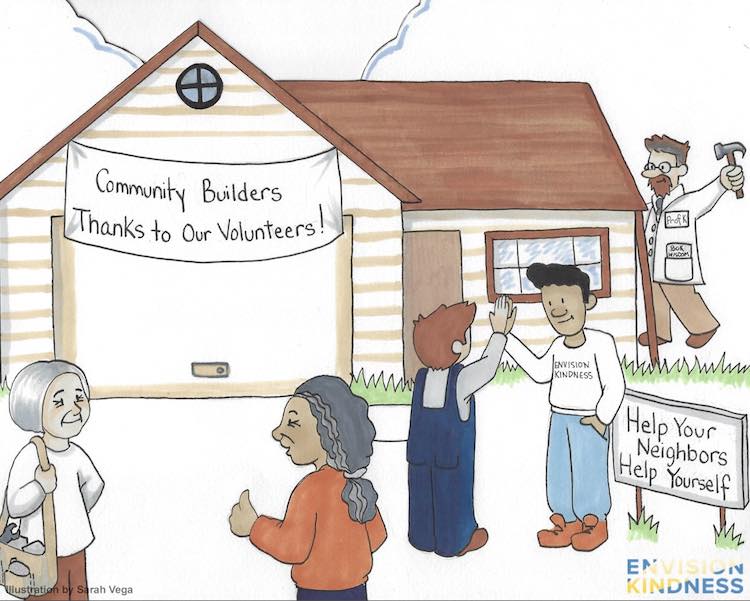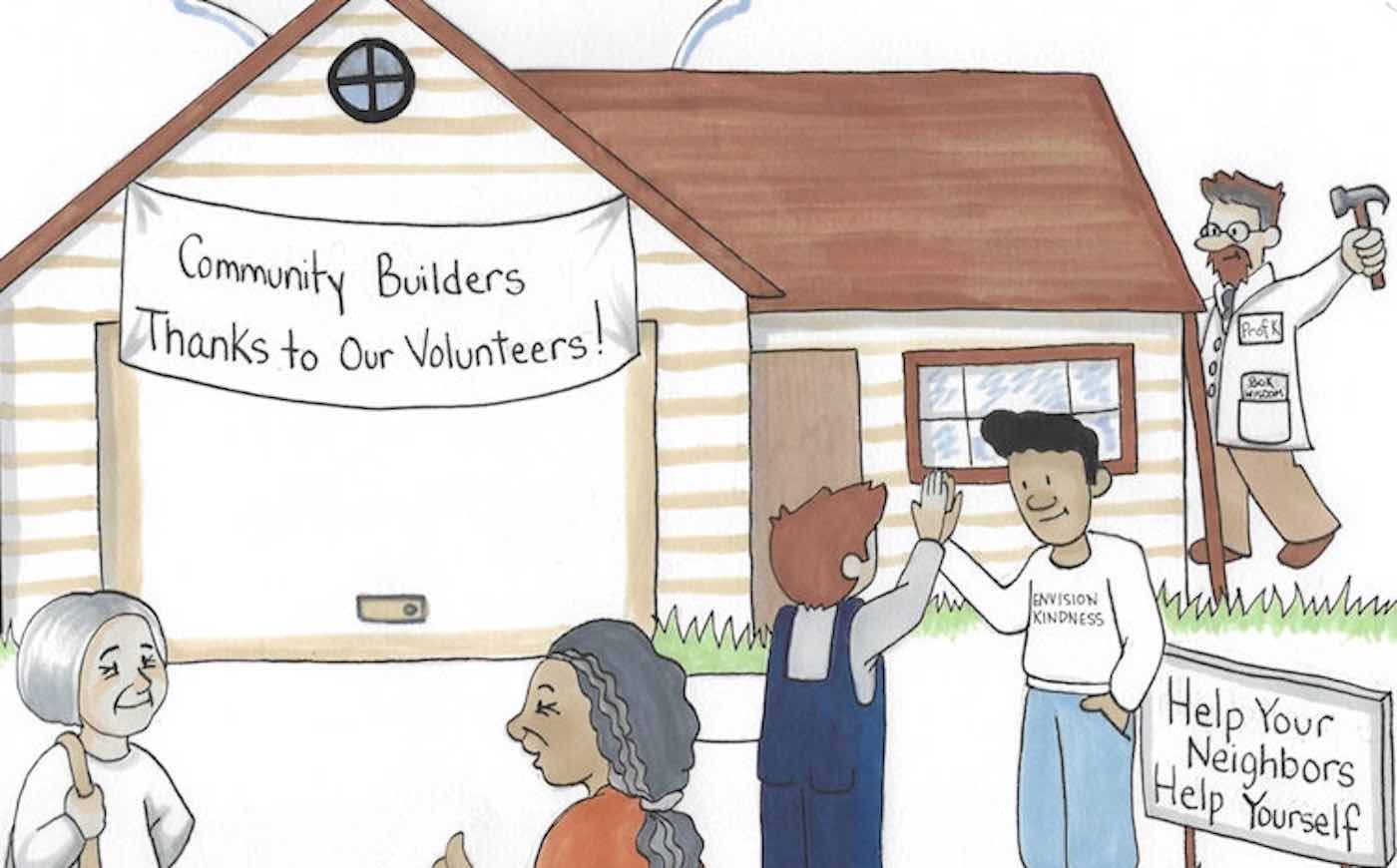
This installment of the Science of Kindness is reprinted with permission from Envision Kindness.
Once a month, I volunteer at a meal center to help serve food to people who are in need. Despite the many other things that I need to do, I really look forward to meeting and serving the patrons, even if only briefly.
Although my motivation begins with wanting to help others and be grateful for what I have been given, it is joy that helps bring me back when I am very busy. I first noticed this some time ago: at the end of our shift, after the kitchen and dining room have been cleaned up, I would experience a lightness of being; a sense of satisfaction and reconnection to purpose. It just feels good.
Allen Luks coined the phrase for this feeling as “the helper’s high”: the sense of euphoria that can be experienced soon after helping someone else. Luks defined two phases—the first characterized by that uplifted, euphoric mood; the second by a longer-lasting sense of calm. The greatest effect (the high) was observed in helping strangers.
A few years ago, as I was researching how kindness affected health, I came to learn that volunteerism was associated with a markedly lower risk of dying. Depending on the study, the decrease in death rates ranged between 20 to 60% or so.
RELATED: How Traffic Jams Show How We Are All Connected Through the Science of Kindness
For perspective, this is hugeAfter water filtration and chlorination were introduced early in the 20th century as a means of providing clean drinking water to the masses, death rates from contaminated water only dropped by about 15 to 20%.
The observations on volunteering come from epidemiologic studies that follow various populations over time. They are notoriously complex because of how people experience a lot of what are called “confounding variables”—different things happening at the same time. For example, people are getting married or divorced, getting or losing jobs, maybe quit smoking, maybe eating and exercising better. With scientific variables like these, it can be hard to sort out cause and effect. That is, maybe people who volunteer live longer simply because they are healthier and able to volunteer. Or perhaps they have the financial resources (don’t have to work two jobs) to allow them more time to volunteer.
Since scientists can try to adjust for these different life events, however, studies generally report that the effects of volunteering remain after these adjustments with reasonable consistency. Following them over time also supports this idea—that volunteerism reduces death. One recent and large European study found that self-reported health scores were significantly better in volunteers than non-volunteers—the difference in scores equivalent to about 5 years of aging.
CHECK OUT: The Science of Kindness – Biology Proves How We Are All Connected
How could volunteering decrease the risk of death? There are several factors at play. The first, and likely most significant, is decreased symptoms of stress and uplifted mood. Multiple studies have provided evidence that volunteering is good for depression, well-being, and social networking, among other effects – which is all entirely consistent with Luks’ observations and my own microcosmic experience. Secondly, people who volunteer regularly also make more effort to take care of themselves, as demonstrated in visits to their doctor for preventive health care.
Finally, people who volunteer may be more physically active, as seen in the Baltimore Experience Corps Trial, a study of the effects of volunteering in older adults. In that study, women (but not men) had a significant increase in walking each day compared to those who did not volunteer.
To try to tie this together, volunteering likely exerts its positive health effects by connecting people to others and to an activity that they find meaningful. Achieving connection, purpose, and meaning is critical to attenuating stressors of life—particularly loneliness. Since stress is a major cause of disease, especially heart disease, the ability to quench the need for connection, purpose, and meaning can bring about beneficial and salutary changes for people. And when there is purpose and we are connected to others, we take care of ourselves.
LOOK: Instead of ‘We Are What We Eat,’ the Science of Kindness Says ‘We Are What We See’ in Daily Life
Most have heard the ancient wisdom that giving benefits the giver more than the receiver. An excerpt from Proverbs speaks to this point by saying: “A generous man will prosper, he who refreshes others will himself be refreshed.” If we look at that solely from a materialistic perspective, the concept is hard to fathom. But if we look at it from a spiritual and now biologic perspective, it totally makes sense. Even many years ago, our predecessors understood this point without modern scientific techniques.
About 25% of the US population volunteers – so what do you think would happen if we could make that number even higher?
If you can’t volunteer right now but you still want to get that good feeling, try looking at the images of kindness, compassion, and love on the Envision Kindness site – because we now know that even simple images of kindness can inspire similar sensations of euphoric “helper’s highs”.
Interested in learning more about the science of kindness and its role in your life? Visit EnvisionKindness.org to learn more.
Be Sure And Share The Science Of Kindness With Your Friends On Social Media…




















